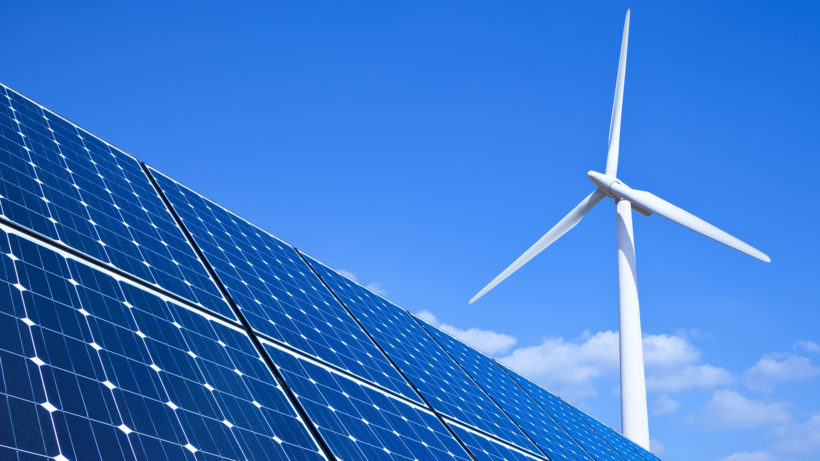According to the recently launched first ever Renewable Energy Index, renewables in Australia generate enough energy to power 70 percent of households in the Land Under.
The Green Energy Markets, a reputable energy market analyst is set to publish a monthly renewable energy index to help Australians keep track of the renewable energy sector’s developments including jobs created, pollution reduction, enhanced power supply, and savings on power bills after rooftop solar installation.
“Renewable energy, particularly wind and solar, are now beginning to emerge as a significant source of power,” Noted Tristan Edis, Director of analysis and advisory.
The recently released 2016/2017 Benchmark Report which was fully funded by GetUp revealed that electricity from renewable energy sources was mostly generated by hydro and wind, and amazingly rooftop solar was the third largest contributor.
These renewables produced enough energy to keep Australian lights on in 7.1 million households or 70 percent of all homes.
Generally, renewable energy sources account for 17 percent of Australia’s power supply since businesses and industries equally demand a share of the same.
Mr Edis hoped Australians would now see the benefits of renewables without thinking that they only generate some “dinky” amount of energy. “This is a serious amount of power.”
“Ten years ago renewables represented about 7 per cent of our electricity supply,” he said. “Last financial year it was 17 per cent.”
The future of the Australian renewables industry
This level of renewables is bound to increase once projects that are currently under construction are completed. These are expected to deliver enough electricity to power an additional 1.5 million homes, bringing the total of household consumption to 90 percent.
Clean energy has also played a great role in preventing carbon pollution which is equivalent to removing about 8.1 million cars from Australian roads, and this can be equated to more than half of all vehicles in the country.
The renewables sector is also creating new jobs. The renewable energy index also showed that at the end of 2016/17, there were 46 major renewable energy projects in progress, all of which are estimated to employ 8868 full-time employees for one year.
Majority of the new jobs created will be in NSW, with 3018 jobs being created mostly from the construction of wind farms.
Queensland comes in second place with 2,625 jobs, with 70 percent of these coming from solar farm construction and the rest from wind farms.
Renewable energy index reveals residential solar dominance
The renewable energy index also reveals that 150,000 small-scale rooftop solar PV systems were installed in the year to June 2017, and these are enough to power 226,000 households.
“Power from rooftop solar in particular has grown spectacularly,” said Mr Edis.
“Back in 2008, generation from solar was little more than a rounding error,” he said.
“These solar systems will also save consumers $1.6 billion off their electricity bills over the next 10 years.”
Mr Edis noted that large-scale solar is expected to grow significantly over the next year considering that construction costs have sharply come down.
“The thing that’s concerning is that really, we’re in a boom right now but in 12 months’ time it looks like a bust.”
You can learn more about residential solar companies on SolaTrust – an independent rating and review website for the solar industry. Comparing multiple quotes and searching online for client testimonials and reviews are imperative when purchasing a system – and will help you select a highly-rated installer, like Clean Solar and Electrical rated 4.9/5.
Updating the renewable energy target
Mr Edis added that the Renewable Energy Target had fueled the boom, which is expected to end in 2020. And it is likely that this target will be achieved early, probably by the end of 2018 given the current rate of construction.
If new targets are not adopted, such as the Clean Energy Target suggested by the Finkel report, Mr Edis noted that growth in renewable energy won’t continue.
“The renewable energy sector has staged a remarkable recovery, after investment completely dried-up under former prime minister Tony Abbott,” Mr Edis stated.
He further said that most renewable energy investors had recovered their confidence under the Malcolm Turnbull’s leadership, which changed the tone and attitude towards the Renewable Energy Target in the wake of the then environment minister Greg Hunt’s comments that retailers should fully meet their commitments under the target.
“Investors have now recovered their confidence under Malcolm Turnbull, supported by a range of state government initiatives as well,” he said.
“However the current boom in renewable energy investment and jobs could soon turn to bust unless the Federal Government moves forward on Finkel’s recommendation for a Clean Energy Target.”
Originally posted on Australian Solar Quotes: Renewable Energy Index: renewables powering Australia



Leave a Reply